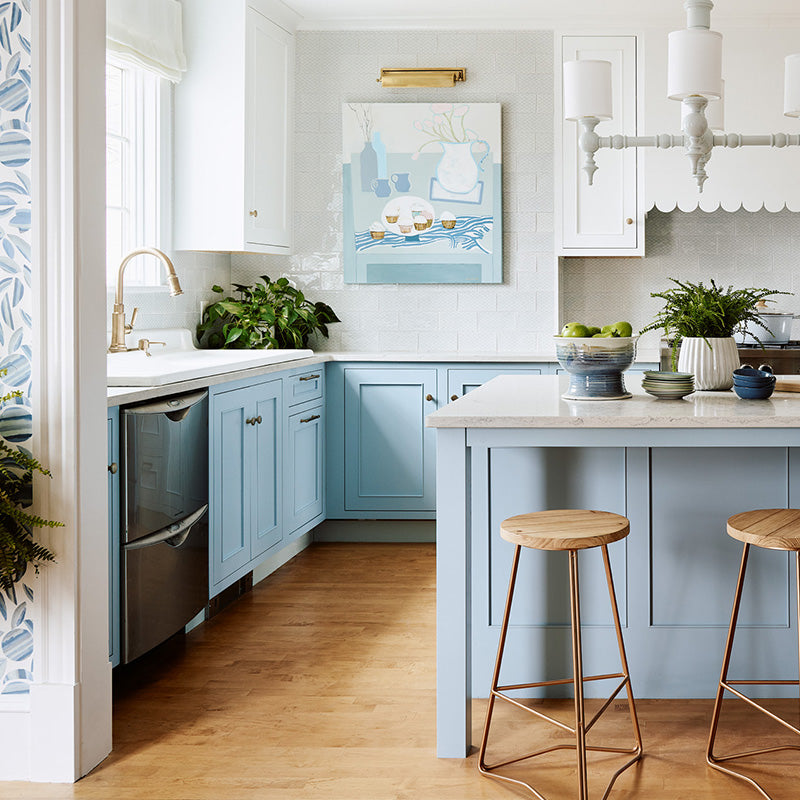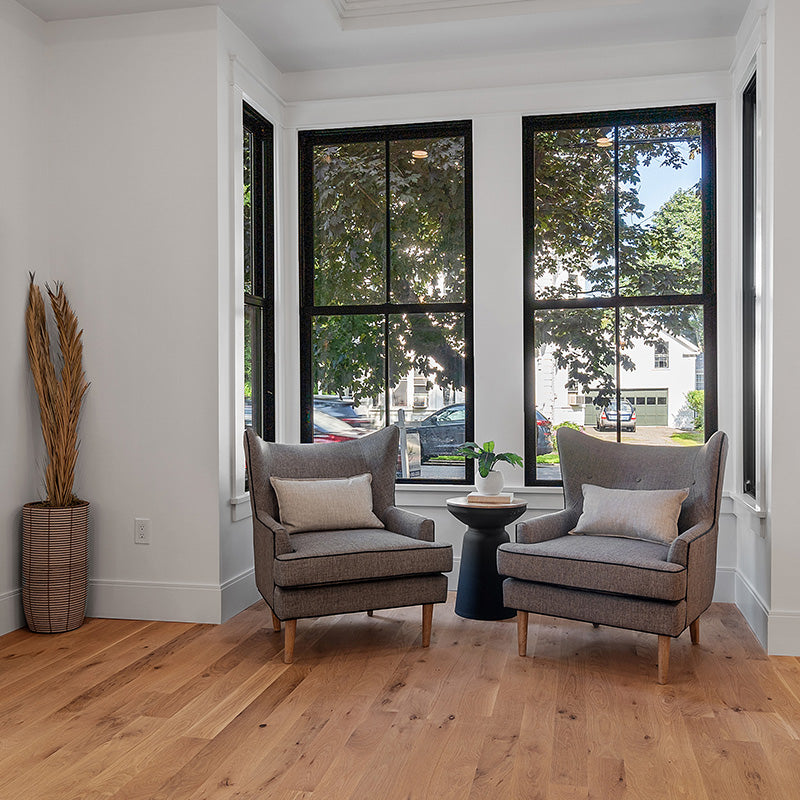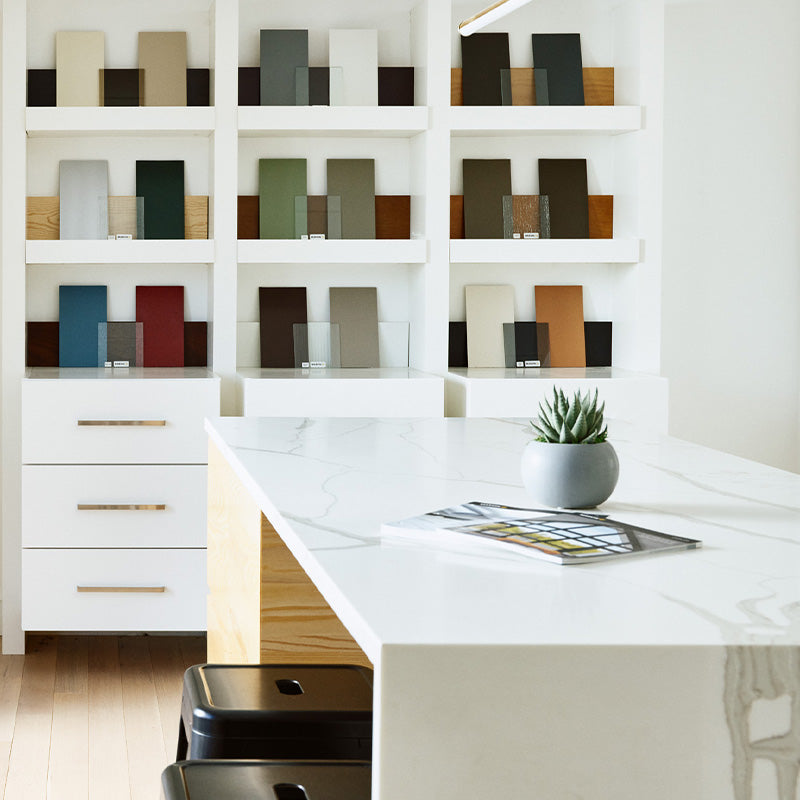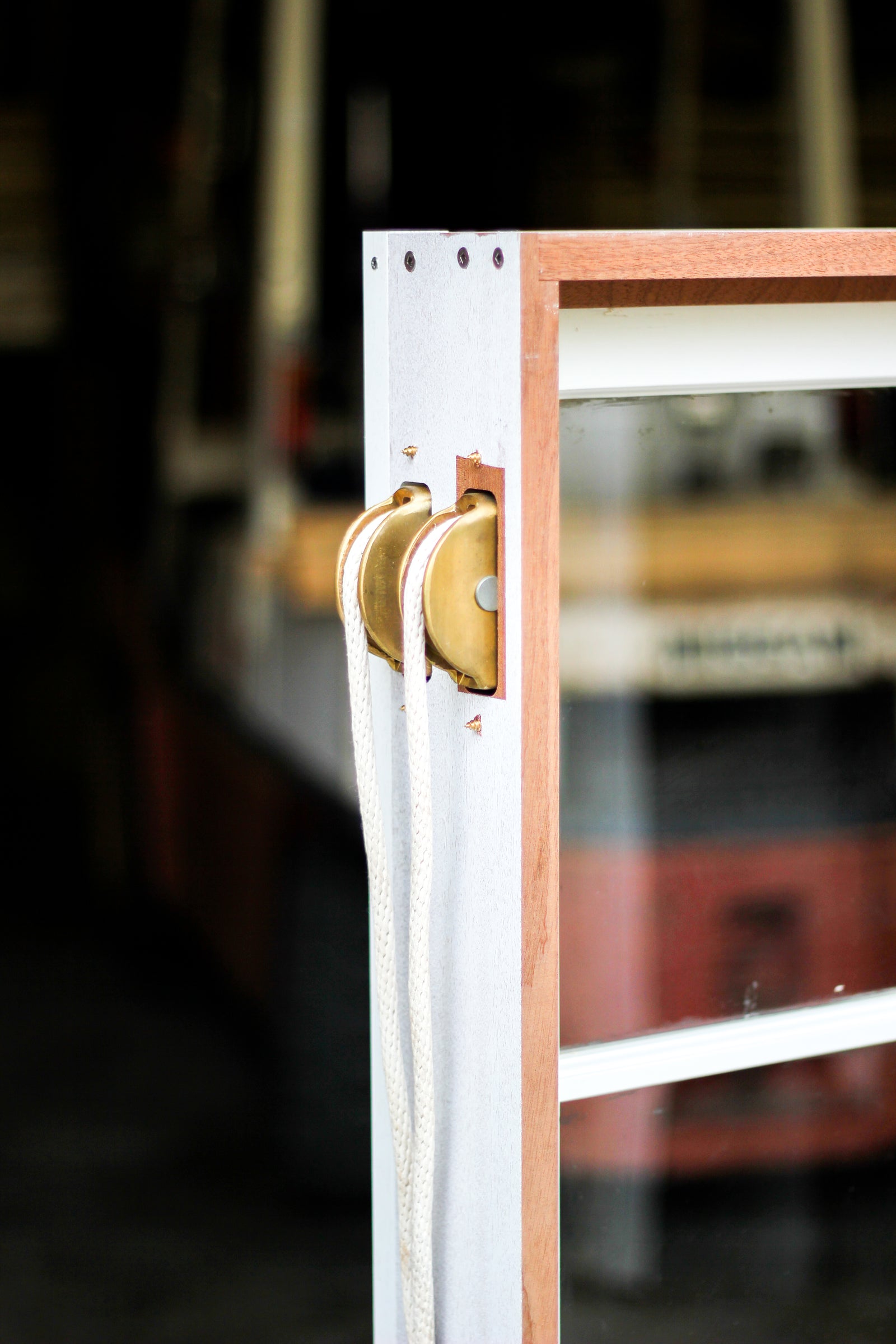Your Cart is Empty
Projects

6 Best Siding Materials for Your Home
April 14, 2016 7 min read
Most people put a lot of time and effort into the interior design aspect of their home. How the kitchen is laid out, picking out furniture, plants and whatever it is you’d like to hang on the walls. Often time amidst all this , the exterior gets lost. There is a lot of talk about curb appeal and the like, however most people relate that to a coat of paint and some landscaping. I ask you: look closer.
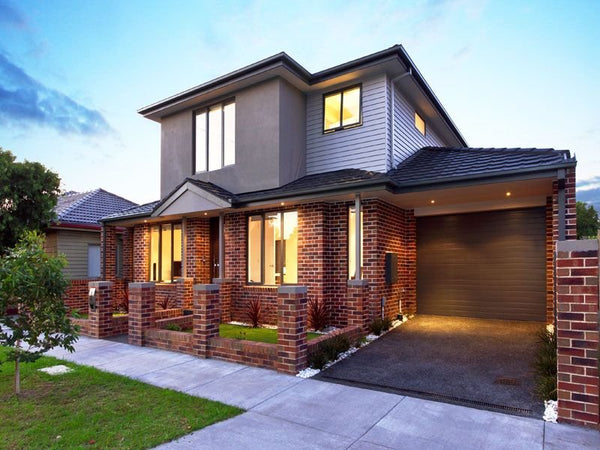
There are many different options when it comes to the exterior of your home. Often these choices are mostly made when the home is being built. However consider the changes you can make. Whether it be a different shade of blue you may choose and a different siding material all together, changing the face of your home can make a big difference.

A different siding material may add to the insulation factors of your home. This can save you money on heating and cooler your home. Consider that while you are questioning whether new siding is a worthwhile investment.
Your siding material has more effects on your home than just how it looks. If a home begins to leak, this water damage can get to the internal structure of your home, making for bigger problems down the road. Perhaps you could give your home a new face while preventing major damage at the same time? Different siding materials have different insulating capacities, be sure to choose one that suits your climate and the needs of your home the best.
Vinyl siding

The low cost, versatility and easy maintenance of vinyl siding has helped it become the most popular siding choice in the United States. While some design professionals and homeowners are turned off by the "plastic look" of some vinyl siding products, the variety of colors and styles available helps explain this siding's popularity. Because the color is throughout the material, nicks and scratches don't show up. Sophisticated manufacturing techniques create products that do a surprisingly fine job of mimicking wood-grain lap siding, wood shingles and even stone.
Vinyl siding is lightweight and, in many instances, can be installed directly over existing materials, so it's a good retrofit option. Because it's easy to handle, vinyl installation can be installed quickly, saving labor costs.
Relatively new to the market, insulated vinyl siding features a layer of expanded polystyrene foam, providing an insulating value of R-2 to R-6. Insulated vinyl is on the checklist of items that can help a house achieve Energy Star qualification. Expect to pay about 15 percent more for insulated versions of vinyl siding than regular.
Pros: The material requires little or no maintenance, and dirt simply washes off. Never needs repainting. Vinyl has relatively low cost compared to other siding materials. The best brands offer transferable lifetime warranties.
Cons: Because the standard panels are 12 feet long, the ends of the panels must be overlapped, creating noticeable seams. You can order extra-long panels that reduce the number of seams, but you'll pay a premium of about 30 percent more than standard-length vinyl.
Green : The same stuff that makes vinyl so tough — polyvinyl chloride or PVC — lasts for decades (if not centuries) in landfills. Although many vinyl manufacturers claim that the material is readily recycled, not many contractors take the time to remove and recycle used vinyl siding. Manufacturing PVC can produce dioxin and other toxins.
Cost:$2 to $7 per square foot, installed. Expect to pay $6,000 to $13,000 to install vinyl siding on an average two-story house.
Wood siding

Few building materials have the natural charm and beauty of wood clapboard and shingle siding. Prized for its warmth and workability, wood siding is the premium choice. Commonly used for bungalow, Cape Cod and cottage exteriors, wood siding offers a rich look and is durable if maintained properly. If you are attracted to this look keep in mind that it requires periodic maintenance (chalking and painting or staining to prevent weather damage) and is susceptible to insect or rodent attacks. Depending on your species of wood and maintenance, wood siding can last from 10 to sometimes 100 years.
Wood siding comes in clapboard (also known as lap or bevel siding) as well as shakes and shingles. Clapboard siding uses planks of wood installed horizontally with an upper piece that overlaps the lower piece. Western red cedar and redwood, woods known for being attractive and durable, are considered the best choices.
More uniform in appearance but thinner than shakes, shingles give you a smooth and consistent look. They can be cut into different shapes to add visual interest to your exterior. Some manufacturers also offer shingles treated with fire-retardant chemicals, often a requirement in high-risk locations. Be sure to check into the local rules in your area.
Wood siding typically costs around $5 to $10 per square foot installed. That doesn't count additional cost for painting or staining.
Pros: Wood is easy to cut and shape, and can be installed by reasonably skilled DIYers. It's a great-looking material prized by architects, designers and homeowners for its natural beauty.
Cons: Better grades of wood can be pricey. Diligent maintenance adds to the overall cost. Retrofitting with wood siding requires removing existing siding materials.
Green Life: Wood siding is considered a highly sustainable material that breaks down easily in landfills. The best grades are made from old-growth timber. To relieve the pressure on old-growth forests, choose wood siding that's certified by the Forest Stewardship Council as being harvested from sustainable forests.
Cost: Clapboard siding: $5 to $8 per square foot, installed. Expect to pay $14,000 to $23,000 to have wood siding professionally installed on an average two-story house.
For Shingle siding: $6 to $9 per square foot, installed. These costs do not include additional painting and staining.
Brick siding

Made from fired clay, genuine brick comes in different sizes and textures. Brick is commonly found on Colonial, Tudor and English cottage exteriors, providing a beautiful look that has been used for hundreds of years and has stood the test of time. These days brick siding is usually a veneer constructed outside of a home's wood frame structure, with mortar used to hold the bricks together.
Since water can penetrate brick veneers, a membrane installed between the brick veneer and house can protect the structure. Under normal conditions and when installed correctly brick siding can last the life of your house. Installing brick is labor-intensive, so the cost is on the higher end compared to other siding options.
Pros:Brick is durable and you are not likely to have to replace anything in your life time, barring some unforeseen collisions and/or major storms.
Cons: Brick is permeable so water can get inside without a membrane installed. Also, because installing brick is labor intensive it can get expensive.
Green Life:Depending on the source of your brick, they can be very sustainable. While the clay mining can sometimes have environmental costs, the do last for hundreds of years when properly installed.
Cost:Typically, brick siding costs around $6 to $15 or more per square foot installed.
Fiber-cement siding

Offering the look of masonry, stucco or wood at a lower cost, fiber-cement siding has become a popular siding choice for many homeowners. Fiber-cement siding is low-maintenance, non-flammable and termite-resistant. Available in a range of styles and textures, factory painting or finishes are highly recommended.
On the other side, fiber-cement siding could encounter possible moisture-related problems, and older homes built before the late 1980s may have siding that contains asbestos and requires a professional abatement contractor for removal.
Pros: Fiber-cement siding resists expanding and contracting with changes in humidity and temperature, so caulk and paint really hold up. It's fire-resistant, termite-proof and it won't rot. A 30-year warranty is the norm.
Cons:Fiber-cement siding is flat-out heavy, and installation requires special techniques and tools that add to the cost. Finding a remodeling contractor with experience installing fiber cement can be a challenge. Retrofits mean completely removing the old siding, adding about 5 percent to the overall cost.
Green Life: It's extremely durable and has a long replacement cycle, which scores points for sustainability. However, fiber cement is relatively new and that longevity has yet to bear out.
Cost: Horizontal board siding: $5 to $9 per square foot, installed. Expect to pay $13,000 to $22,000 for an average two-story house.
Stucco siding

Commonly used in desert environments, traditional stucco is made from building sand, Portland cement, lime and water. A waterproof barrier paper and galvanized-metal screening are applied over wood walls before stucco is added to provide a good base for the stucco and protect the walls underneath. While stucco can be applied to homes with brick and stone surfaces, the classic look is commonly found on Mediterranean, ranch and Spanish-mission exteriors.
Because stucco is very rigid, careful installation can help reduce the possibility of unwanted cracks. When stucco siding is properly installed and maintained, it can last the lifetime of the house.
Pros: Toners added to stucco mixtures result in beautiful, organic colors that go all the way through the material, making repainting unnecessary. Stucco is a low-maintenance material that's resistant to fire and insects.
Cons: There's a lot of prep work required before stucco can be applied. Finding a reliable, experienced stucco contractor can be a challenge.
Green Life: New formulations of stucco use earth and lime instead of Portland cement — cement production is linked to CO2 emissions.
Cost: $6 to $9 per square foot, installed. Expect to pay $12,000 to $22,000 for an average two-story house.
Stone and stone-veneer siding

The natural beauty and durability of stones like granite and limestone are appealing to homeowners who want a siding that adds texture and visual interest to their exterior. Because stone is more expensive than other siding options — and can be difficult to add to an existing home — concerns about costs should be considered.
More lightweight and less expensive than natural stone, stone-veneer siding comes in natural and synthetic materials. There are many styles available that help enhance your home's curb appeal. Annual cleaning with a hose and inspection of the siding helps ensure it will last the life of the house.
Although it's not often used to cover entire houses, it's a popular choice as an accent, covering lower portions of walls or chimney exteriors.
Pros:Both stone and stone-veneer are very durable and are likely to last a lifetime and more.
Cons:Real stone can be heavy and expensive and is therefore hard to add to an existing structure or retrofit.
Green Life:The sustainability features of real stone depend on your source. Where it is mined, how it is mined and how far it has to travel. These costs can somewhat be off put by the fact that once you have them, they won’t need replacing. For engineered stone, the inert material that doesn't off-gas or use toxic ingredients during manufacturing. Reduces demand for real stone and associated environmental disruption.
Cost: Around $10 to $30 per square foot installed, and if maintained properly, can last the lifetime of house.
Leave a comment
Comments will be approved before showing up.
Subscribe Today!
Our goal is to provide you with as much information as possible. Our newsletter is full of tips, inspiration and featured projects. We promise to only send you interesting things and never share your email with anyone else.

